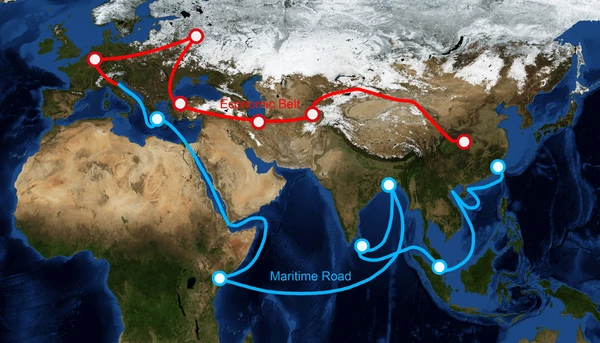
Launched in 2013, the Belt & Road initiative is a massive infrastructure and investment project aimed at facilitating trade by inter alia increasing railway connection and port connections across several continents. Inspired by the ancient Silk Road, the project is an expression of Chinese economic power and influence, particularly in regard to the developing world. It has been ten years since the launch of the massive investment project; what can be learned of what it has achieved and what can be expected from it in the future?
China’s economic power and domination has long been recognised, as China has steadily remained the number one trade partner of numerous countries. The Belt & Road initiative (BRI) was launched to increase this power, investing in infrastructure, and facilitating trade and advancing development in developing countries. However, the economic interests were not the only aim of the BRI as it also considerably feeds into China’s political influence. Indeed, massive infrastructure investments, such as those advanced by China, is not the most profitable, but this is made up by the profits it gains in terms of influence, and that it is therefore a strategic foreign policy move prior to being an economic strategy. Western scepticism adopts this view and has been reluctant to perceive it as anything other than China’s growing influence. The West is uncomfortable that China is successful in building strong relations with the developing world, something the West has failed to do. China understands the developing world whereas the West’s perspective is outdated.
Is the scepticism of the West grounded? Over a ten-year period, China’s BRI has contributed to the strengthening of the infrastructure including in Central Asia, Afric and South America, by increasing railways and connectivity, investing in factories and creating employment. Such investments can change the course of development of a country and contribute to long-term sustainable economic growth. However, concern has arisen out of the debt generated by the investments, and China has been accused of ‘debt trap diplomacy’, which would increase the dependence of countries borrowing from China, paving the way for Chinese influence.
The enormity of the Belt Road initiative signifies that it is difficult to access its impact and success as a whole. Indeed, while it has demonstrated success and development in some countries, in others, it has produced debt and dependency. Moreover, while it has been a project for ten years and some outcomes can already be perceived, the full scale of the BRI and its impact will take longer to manifest. Lastly, the success of the BRI depends also on the perspective adopted, as from a Western perspective, particularly from the United States, there is a fear that the BRI is contrary to its interests. What is certain is that the massive investment project is a testament to China’s economic strength and also its way of waging foreign policy with developing countries, changing geopolitics and international relations.
By The European Institute for International Law and International Relations
References












